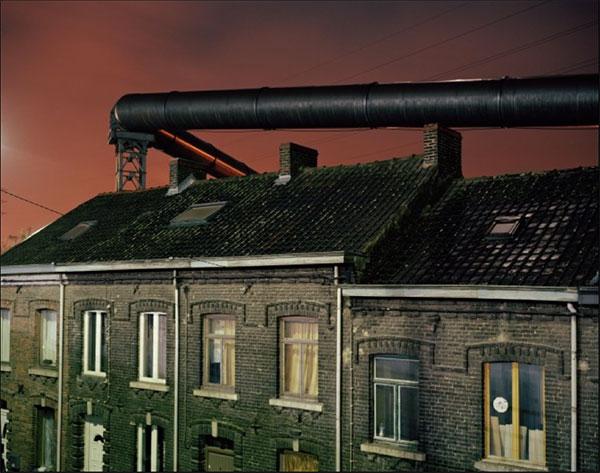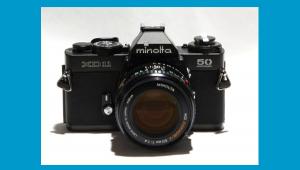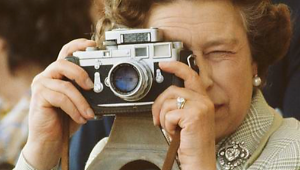Small Town Says Photojournalist Staged Bleak Photos that Won Prestigious World Press Award

The mayor of the Belgian town of Charleroi, Paul Magnette, admits he’s not an expert on photography but he says he does know bad journalism when he sees it. And he knew he had to act when he saw that Italian photographer Giovanni Troilo had won first prize for "contemporary issues” in the prestigious World Press Photo's contest for his bleak photo essay about Charleroi called “The Dark Heart of Europe.”
This week, the mayor sent an angry letter to the World Press Photo organization requesting that Troilo’s prize be withdrawn. He argued that the photo essay “is anything but journalism” and that some of Troilo’s images, which show his town as dark, dangerous and depressed, were actually “staged.” (We’ve translated parts of his letter below.)
"Madam Chair of the jury, Mr. Director, I am certainly not an expert in photography. But I know that journalism, as in photography there is the choice of having a point that is necessary and normal. However, to hide some perspectives with unverified information and to distort and twist reality by staging, it is anything but photojournalism. At least, that is not the quality photojournalism you're supposed to reward. You say, The World Press Photo is committed to the support and development of photojournalism and documentary photography at the International level. We are also committed to this mission and that's why we ask you to withdraw the prize awarded to Mr. Troilo in light of our arguments and our explanations.”
There’s been a lot of debate about the World Press Photo contest's rejection of 20% of the contest entries because of “too much” photo manipulation on images. Conversation and debate have swirled around what exactly is too much Photoshop work. Does the removal of a stray foot or a cigarette butt constitute distorting the truth?
But Charleroi raises what is, perhaps, an even more important issue than Photoshop manipulation. Rather, it can be seen as the blurring the lines between photojournalism and conceptual and staged art photography.
At the heart of photojournalism is an allegiance to truth. Yet even Matthew Brady’s photographers repositioned corpses on Civil War battlefields to produce stronger images of the “true” horrors of war. Other photojournalists have staged or been accused of staging photos for effect and that includes some of the greats like Robert Capa and W. Eugene Smith.
And for Mayor Magnette and the people of Charleroi, they believe Troilo went way over the truth line with his “The Dark Heart of Europe” photo essay.
"The dramatic stage lighting and photo captions suggest that the person in the photo is a recluse living at home to escape violence in his neighborhood. This is actually Philippe Genion, a well-known personality in Charleroi and…he loves posing topless. He lives in a neighborhood that is relatively peaceful. Its magnificent home is also a wine bar,” Magnette wrote about the image below.

As evidence of this, the town provided the World Press Photo organization with this video showing the wine bar and a jolly Mr. Genion.
"Mr. G. is a prominent figure, earthy and very attached to his region. Far from the image given him by photographer who seems to have wanted to build his image by referring to the ‘neurotic obesity’ mentioned in the introductory text of Giovanni Troilo.”
In another photo, that of a lone parked car in the village’s “Lover’s Lane” the mayor noted that, “The image of the car is a staging with the cousin of the photographer.”

He argued that the night shot of the Charleroi police force implied that its new headquarters was a response to a rise in crime.
Rather, he explains, that this was a long planned city project and the residents are proud of it because it “was designed by the famous architect Jean Nouvel.”

The mayor and citizens of Charleroi aren’t the only ones complaining. Thomas Vanden Driessche, a Belgian photographer on social media, also objected to Troilo’s photographs because they transformed the reality of Charleroi.
"The use of the staging, artificial lighting and especially the fake and falsehood of the captions involved in the construction of this fiction take on the appearance of a report,” Vanden wrote. “This does not cause me any concern if this essay set was the result of a very personal artistic work. But the photographer does not present his work as such. Rather, it clearly gives a real journalistic dimension/documentary approach. The mere fact that this series was submitted to the World Press Photo and especially the fact that it has been awarded gives it a journalistic credibility.”
Although Italian, Giovanni Troilo and his parents had lived in Charleroi for many years while his father worked in a factory there. Mayor Magnette ends his letter to the WPP noting that there might be more behind the essay than simple reportage.
"The photographer has literally gone about distorting reality, which discriminates against the city of Charleroi, its people, and the profession of photojournalist. No, Charleroi is not the black heart of Europe. You will not find residents who recognize this town in his series of images; whose captions are more like settling of old scores, than reportage."
Troilo, for his part, wrote in the introduction to “The Dark Heart of Europe” the following statement:
"Today, social unrest is part of the lives of citizens of Charleroi. The roads, which were clean and the flowering time, are now abandoned and in disrepair. Factories close and vegetation reasserts itself in the old industrial areas. Only a perverse and twisted sexuality, racial hatred, a neurotic obesity or drug abuse appear to be the solutions to make it acceptable endemic malaise. Charleroi is a reflection of what is happening on a larger scale in Europe. Do we have to stay together as our main mission failed? We'll have a second chance? This is the question posed to Europe today is the question posed to the city of Charleroi, the black heart of Europe.”
The town of Charleroi and, in particular, its mayor would disagree.
Neither the World Press Photo organization nor Giovanni Troilo have responded yet to the letter but WPP says it will in a few days after talking with the photographer.
(Via OAI13)
- Log in or register to post comments

















































